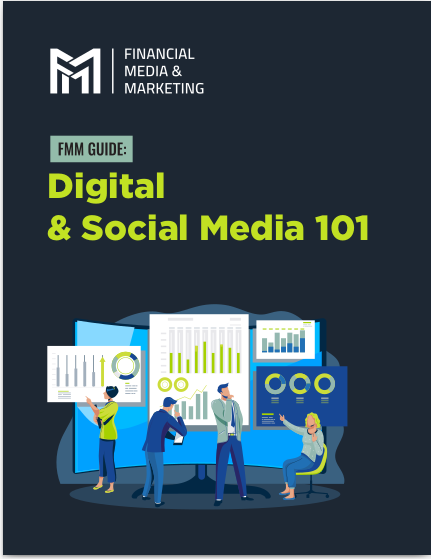Key Takeaways:
-
Your website is the first impression potential clients have of your financial advisory services, so it must be designed to engage, educate, and convert.
-
A high-performing financial advisor website requires a combination of trust-building content, strong calls to action, and seamless user experience to turn visitors into long-term clients.
Why Your Financial Advisor Website Might Not Be Working for You
If you’re struggling to turn website visitors into clients, you’re not alone. Many financial advisors have websites that look good but fail to convert. Maybe your traffic numbers are decent, but the inquiries just aren’t coming in. Or perhaps potential clients visit but leave without taking any action. This means your website isn’t doing its job effectively.
Your website should be more than a digital business card—it needs to work for you 24/7. In 2025, people expect a seamless, informative, and engaging online experience before they even consider working with a financial professional. If you want to turn visitors into paying clients, it’s time to rethink your approach.
First Impressions Matter: Creating a Trustworthy and Professional Look
Keep It Clean and Modern
When someone lands on your website, you have just a few seconds to capture their attention. If your design is outdated, cluttered, or hard to navigate, potential clients will likely leave. A clean, modern layout with professional branding builds credibility and keeps visitors engaged.
Choose a Simple Yet Effective Color Scheme
A well-thought-out color scheme should reflect professionalism, trust, and reliability. Many financial firms stick to blues, grays, and whites—colors associated with stability and trust. Whatever you choose, make sure it aligns with your brand identity and doesn’t overwhelm visitors.
Use High-Quality Images and Graphics
Low-resolution images and generic stock photos make your website look unprofessional. Instead, invest in high-quality images that showcase your expertise and services. Consider using real photos of your team or high-resolution graphics that visually represent your financial solutions.
Content That Converts: What Your Website Needs to Include
Clear and Compelling Messaging
Visitors should immediately understand who you are, what you do, and why they should trust you. Your homepage should clearly state your unique value proposition in a way that speaks directly to potential clients’ needs.
A Dedicated ‘About’ Page That Builds Trust
People want to know who they’re working with before making financial decisions. Your ‘About’ page should go beyond a simple bio—include information about your background, certifications, and approach to financial advising. Adding a personal touch can make visitors feel more connected to you.
Blog Content That Showcases Your Expertise
A blog isn’t just about SEO—it’s a chance to demonstrate your knowledge and provide value to potential clients. Regularly publishing insightful content on topics like investment strategies, retirement planning, and financial market trends positions you as an authority in the field.
Strong Calls to Action (CTAs)
Every page of your website should have a clear and compelling CTA. Whether it’s “Schedule a Free Consultation” or “Download Our Financial Planning Guide,” make sure it’s easy for visitors to take the next step.
Optimizing User Experience: Making It Easy for Visitors to Take Action
Mobile-Friendly Design Is Non-Negotiable
More than half of website traffic now comes from mobile devices. If your site isn’t mobile-friendly, you’re losing potential clients. Ensure your site loads quickly, looks great on all screen sizes, and is easy to navigate on mobile.
Fast Load Times Keep Visitors Engaged
A slow website frustrates visitors and leads to high bounce rates. Optimizing images, minimizing unnecessary plugins, and using a reliable hosting provider can improve site speed and keep visitors on your page longer.
Easy Navigation for a Frictionless Experience
Your website should be intuitive and easy to navigate. A cluttered or confusing layout can drive visitors away. Use clear menus, well-organized sections, and easy-to-find contact options to make the user experience seamless.
Lead Generation Strategies: Turning Visitors into Clients
Offer a Free Resource
People are more likely to give you their contact information if they receive something valuable in return. Offer a free financial planning guide, investment checklist, or budgeting tool in exchange for their email address.
Create an Email Nurture Sequence
Once you’ve captured a lead, don’t let them forget about you. Set up an automated email sequence with valuable insights and gentle reminders about your services. Keep the emails informative, engaging, and focused on building trust.
Leverage Testimonials and Social Proof
Potential clients want to see that others have had positive experiences with your services. Display client testimonials, case studies, or industry awards prominently on your website to reinforce trust and credibility.
Implement Live Chat for Instant Engagement
Adding a live chat feature can significantly improve engagement. Many visitors have quick questions but may not want to commit to a phone call. A live chat option allows you to connect with them in real time, increasing the likelihood of conversion.
SEO Best Practices: Making Sure Potential Clients Find You
Optimize for Local Search
Many financial advisors serve clients in specific locations, so local SEO is essential. Ensure your website is optimized for location-based searches by including your city, state, and region in key areas like headings, page titles, and metadata.
Use Keywords Strategically
Your website should target keywords that potential clients are searching for. Phrases like “retirement planning services” or “best financial advisor near me” can help improve your search engine ranking and drive qualified traffic.
Get Listed on Google My Business
Google My Business is a powerful tool for local visibility. Ensure your listing is up to date with accurate contact details, business hours, and client reviews.
The Role of Social Media: Driving Traffic to Your Website
Share Blog Content on Social Media
Social media is a great way to drive traffic to your website. Share your latest blog posts, financial tips, and industry updates on LinkedIn, Facebook, and Twitter to reach a broader audience.
Engage with Your Audience
It’s not enough to just post content—you need to interact with your audience. Respond to comments, answer questions, and participate in discussions to build relationships and credibility.
Use Social Proof to Build Trust
Sharing client success stories (with permission) and highlighting positive feedback on social media can reinforce your credibility and attract new clients.
Why Your Website Should Always Be Evolving
A website is never truly finished. Technology, consumer behavior, and industry trends change over time, and your website should evolve accordingly. Regularly updating your content, refining your SEO strategy, and keeping up with design trends ensures your site remains competitive and continues to convert visitors into clients.
Ready to Improve Your Website’s Performance?
A high-performing financial advisor website is one that builds trust, educates visitors, and makes it easy to take action. By focusing on design, content, user experience, and lead generation, you can transform your website into a powerful tool that consistently brings in new clients. If you haven’t updated your site in a while, now is the time to make the necessary improvements to stay ahead in 2025.










